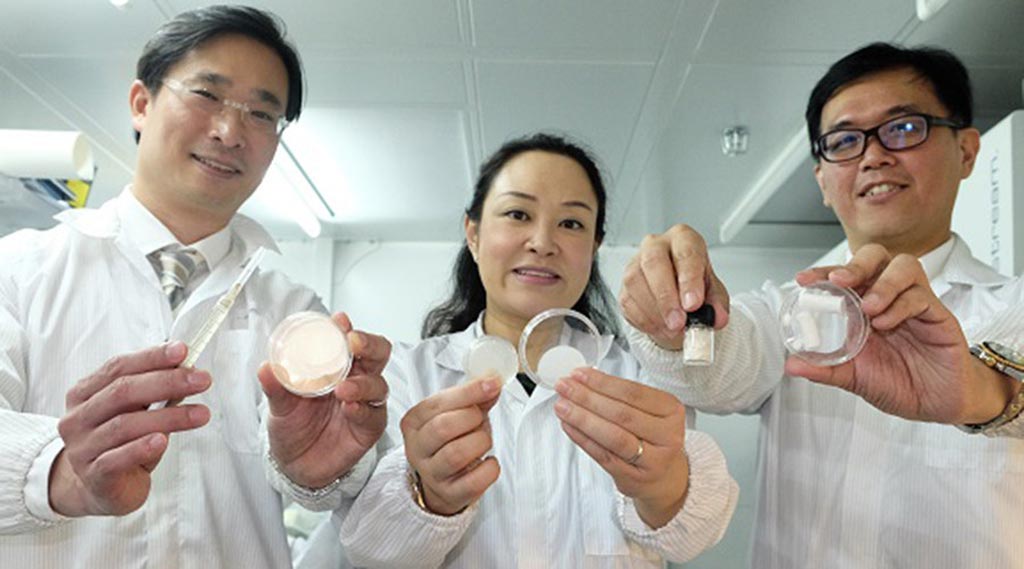Gel Patch Improves Wound Healing and Scarring
By HospiMedica International staff writers
Posted on 03 Oct 2017
A novel prototype patch enriched with angiopoietin-like 4 (ANGPTL4) reduces inflammation in the early phase of wound healing, and helps reduce scarring during the final phase.Posted on 03 Oct 2017
Developed at Nanyang Technological University (NTU; Singapore), the new patch is designed to reduce scar collagen by inhibiting a protein called Scleraxis, which is involved in collagen production via the TGFbeta-Smad3 pathway. Scleraxis also plays an important role in the formation of tendons, which are composed of parallel arrays of collagen closely packed together and are thus similar in structure to scar tissue. When the TGFbeta-Smad3 pathway is turned off, collagen production stops and there is no scarring as a result.

Image: Dr. Wong, Dr Choong, and Dr. Tan with samples of the ANGPTL4 products (Photo courtesy of NTU).
In studies involving mice with diabetic wounds, the wound was shown to heal stronger and thrice as fast with the application of ANGPTL4. When using human fibroblasts as a preclinical model, the researchers found that ANGPTL4 binds to cadherin-11, releasing membrane-bound β-catenin, which translocates to the nucleus and upregulates the expression of an inhibitor of DNA-binding and differentiation (ID3), which also interacts with scleraxis. According to the researchers, the active ingredient ANGPTL4 can be harvested from discarded fatty tissues from patients in hospitals. The study was published on July 24, 2017, in Nature Scientific Reports.
“To reduce scars, all we had to do was to find a ‘tuning knob’ that controls the amount of collagen produced, instead of turning it off completely which is what typical anti-scarring medicine does, and which could interfere with the healing process,” said corresponding author Andrew Tan Nguan Soon, PhD, of the NTU School of Biological Sciences.
“The easy extraction of ANGPTL4 also could mean that in future, a surgeon can use the patient’s fat and turn it into a healing agent on the spot, to promote faster recovery of the patient’s wounds after an operation,” said study co-author Cleo Choong, PhD, of the NTU School of Materials Science and Engineering. “In addition, we have developed ways to package ANGPTL4 into easy-to-use formulations such as gel patches, topical creams, and injectable microcapsules.”
Collagen is the main structural protein of connective tissue, and is the most abundant protein in mammals, making up 25-35% of the whole-body protein content. It is one of the body’s key natural resources and a component of skin tissue that can benefit all stages of the wound healing process.
Related Links:
Nanyang Technological University














